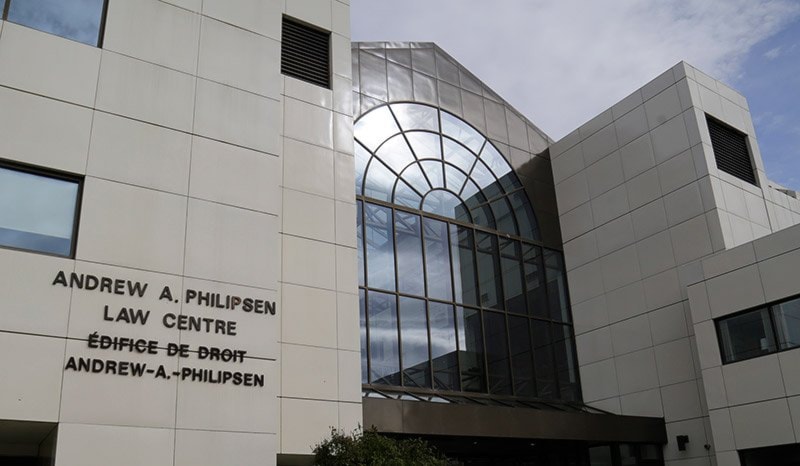A Yukon Supreme Court decision to declare a mistrial in the Michael Nehass case could allow for a faster resolution to a case that has been lingering in court for the past three years.
On Feb. 15 Justice Scott Brooker declared a mistrial, because the court had no other choice, he said.
Nehass was convicted in 2015 of assault with a weapon and forcible confinement. He was awaiting sentencing because the Crown was seeking to have him declared a dangerous offender. But on Jan. 24, Brooker found him unfit to take part in legal proceedings because of mental disorders.
The court was in a difficult position: it couldn’t continue the dangerous offender proceedings with an unfit offender, but it couldn’t force Nehass to be treated either.
That would have left Nehass in a “legal void,” Brooker said, which would have constituted a miscarriage of justice.
The Criminal Code only provides for treatment orders for an accused up until a verdict is reached.
In this case the judge had to rely on old English jurisprudence to find he had the jurisdiction to find Nehass unfit after the verdict.
But on Feb. 15 Brooker said he couldn’t use the same reasoning to force treatment.
Parliament was asked to give judges the ability to order treatment following a verdict but refused to do so in 2002.
And forcing an offender to undergo treatment raises “serious Charter issues,” Brooker said, because it involved Nehass’s physical integrity.
The mistrial means Nehass goes back to the trial stage where a treatment order is possible under the Criminal Code.
If Nehass chooses to go for a judge-only trial, that could allow Brooker to make a new finding of unfitness quickly, because of recent psychiatrist reports that he used to make the same finding a month ago.
Brooker could then make a 60-day treatment order. Psychiatrists told Yukon Supreme Court in January that 60 days would likely be enough to make Nehass fit again.
Once that’s done, the Crown could decide to seek a new trial.
But Brooker hinted that might never happen.
Nehass has already served more time at the Whitehorse Correctional Centre than he would likely get for the crimes he was convicted of, Brooker said.
That opens the door for both the prosecutor and the defence to present a joint submission of time served, which could ultimately see Nehass being freed.
“That might be the best outcome,” said Isabel Grant, a law professor at the University of British Columbia, who said she was only guessing because of the complexity of the case.
But that outcome hinges on the Crown prosecutor not seeking to have Nehass declared a dangerous offender.
Prosecutor Eric Marcoux told the court in January that if the psychiatric treatment worked, he would reconsider his position, since that would prove Nehass was treatable.
But there remains a lot of uncertainty about what each party will do.
The defence could oppose a new trial on the basis that it constitutes cruel and unusual punishment, Grant said.
“I think (Nehass) has a strong case the criminal justice system should leave him alone,” she said, because of his prolonged time in solitary confinement.
“If he is dangerous because of his mental illness, deal with him in the psychiatric system.”
Brooker said he would stay on as the presiding judge.
Given the history of the case — Nehass was arrested in 2011 — Brooker noted it would be a waste of time for another judge to come in and have to catch up with years of proceedings.
For now Nehass is in remand at an Ontario forensic mental health facility. Yukon Supreme Court reconvenes on Feb. 28 to decide how the case should proceed.
Contact Pierre Chauvin at pierre.chauvin@yukon-news.com
